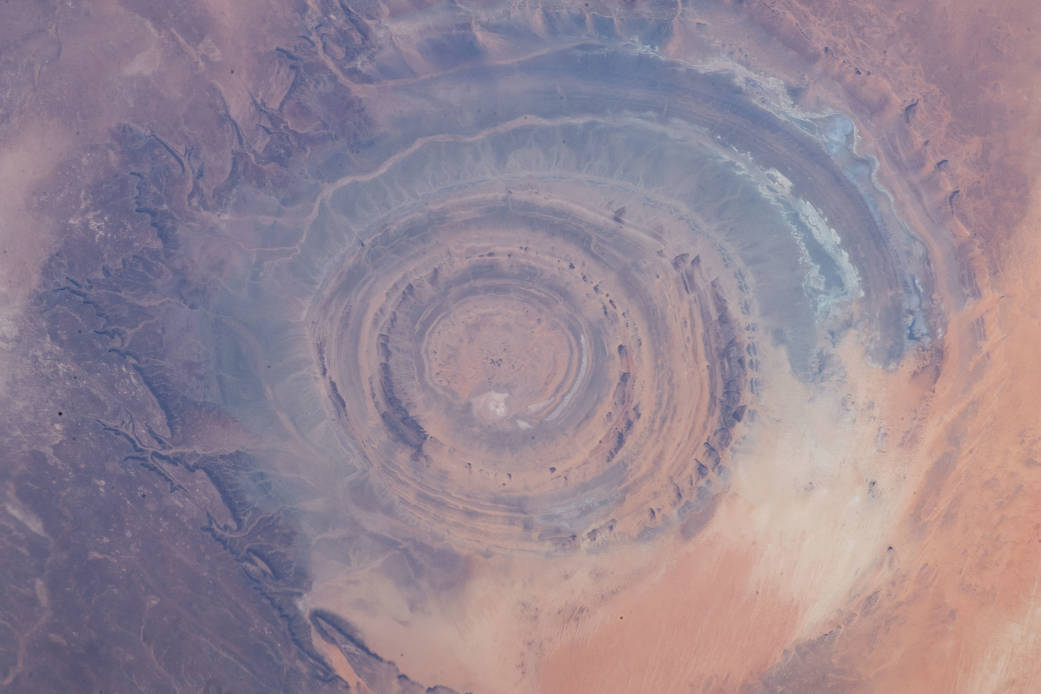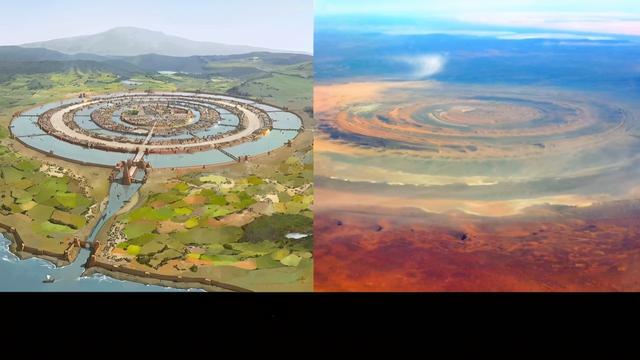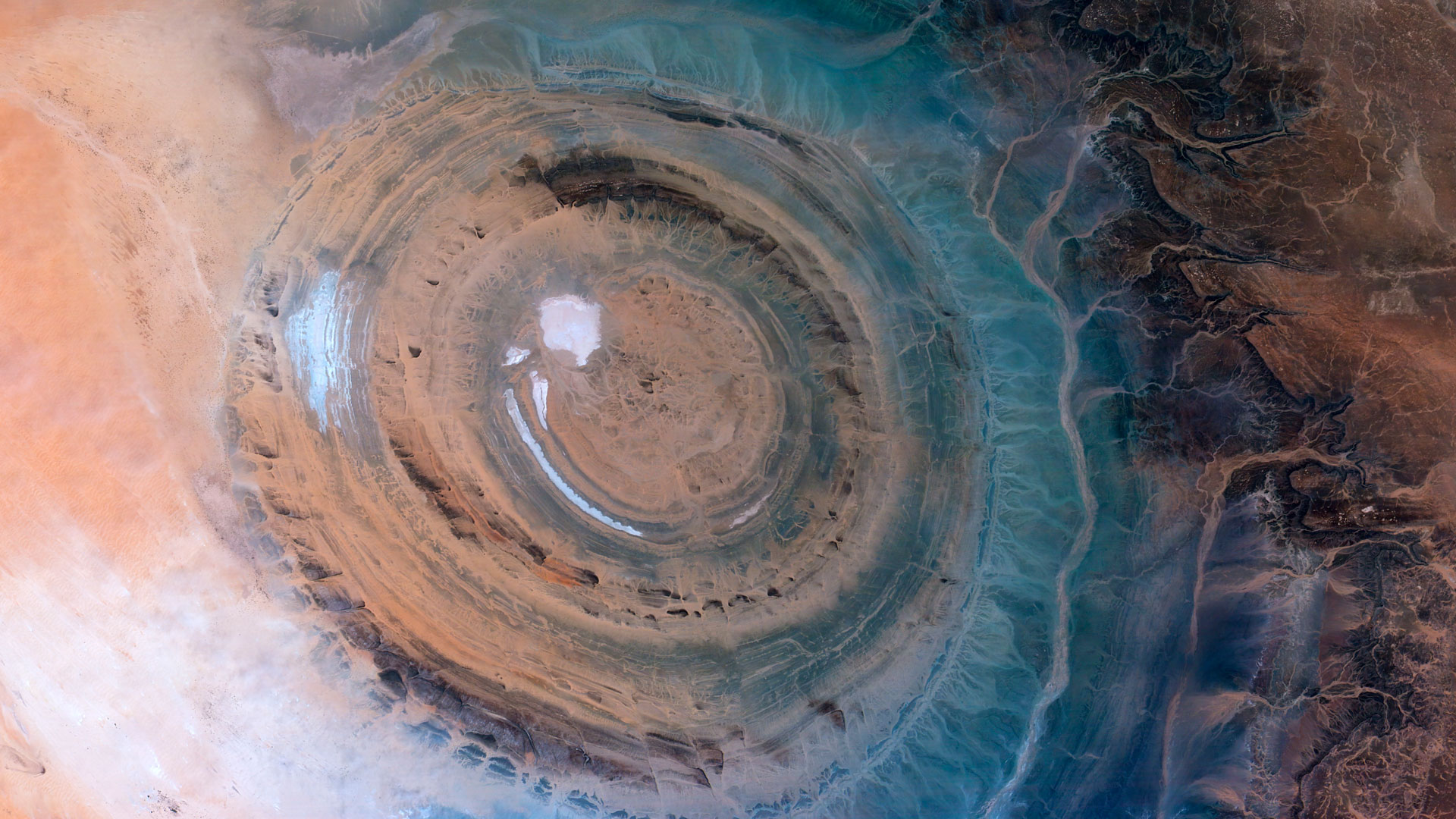
I recently ran across this while cruising YouTube videos and was amazed at what the video's creator had to say. I had never heard of the Richat Structure, or "Eye of the Sahara," and was mesmerized not only by its beauty but by the similarities with the story of the lost city of Atlantis. The story of Atlantis has captured the minds of conspiracy theorists for ages but remains to be considered just a story in the scientific community. Plato's original description of Atlantis claimed that the lost city was 127 stadia in diameter. A stadia is between 185 and 192 kilometers, which means that Atlantis would have been between 23.5 kilometers and 24.38 kilometers in diameter. Google Earth gives a diameter for the Richat Structure of between 22 and 24 kilometers. Interesting coincidence, no?

The mountains to the north of Atlantis that Plato described also match the mountains bordering the Richat Structure. Researchers claim that the mountains north of the structure previously had waterfalls flowing from them when the Sahara was in pre-desert mode. Another interesting coincidence is the first King to rule Atlantis and the first King to rule Mauritania (where the Richat Structure is located) were both named Atlas.

The next notable marker is that the Richat Structure was an island, indicated by the sea level at one point in time. The finding of certain marine life indicates it was below sea level, which somewhat contradicts Plato’s account of Atlantis being surrounded by freshwater. However, the description from Plato would have been consistent at lower sea levels, and if we consider that the island was said to have “disappeared into the depths of the sea,” then the marine fossils found there would not be as surprising.


At the Richat Structure, there is still a freshwater spring observable to this day, and parts will hold rainwater, even growing some vegetation. The Richat Structure lies in an area that is also a land of elephants, something else noted by Plato. The African elephant is known to have become extinct in Mauritania. Next, we have the matching rocks. Plato described Atlantis as such:
“And the stone they quarried beneath the central island all round, and from beneath the outer and inner circles, some of it being white, some black and some red…”
Likewise, the Richat Structure and the buildings in the towns nearby are riddled with white, red, and black stones. Lastly, the dating of the site roughly fits the timeline provided by Plato. The war described by Plato would put the fall of Atlantis around 11,000 years ago. Carbon dating at the site indicates that most sediments had settled there somewhere between 8,000 and 15,000 B.C. This dating window places Plato’s date almost directly in the middle of the estimation. Additionally, there is some evidence that the meteor that hit Greenland as recently as 12,000 years ago could have been the cause of some earthquakes and flooding worldwide as well.

I hope you have enjoyed reading about this, and if you’d like to watch the video that I had come across, I will link it below. Have a great day!
YouTube Link: